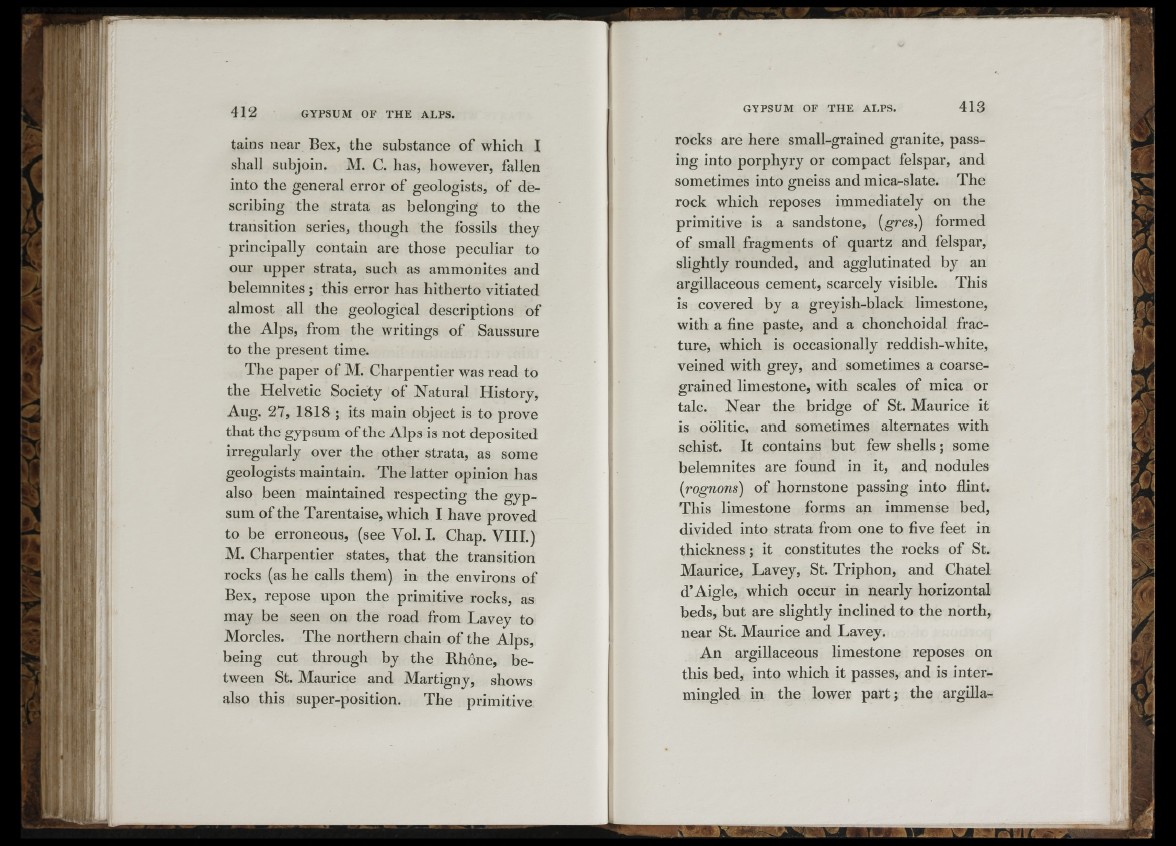
‘JMii.iU
’y-""::;: -
tains near Bex, the substance o f which I
shall subjoin. M. C. has, however, fallen
into the general error of geologists, of describing
the strata as belonging to the
transition series, though the fossils they
principally contain are those peculiar to
our upper strata, such as ammonites and
belemnites ; this error has hitherto vitiated
almost all the geological descriptions of
the Alps, from the writings of Saussure
to the present time.
The paper of M. Charpentier was read to
the Helvetic Society o f Natural History,
Aug. 27, 1818 ; its main object is to prove
that the gypsum of the Alps is not deposited
irregularly over the other strata, as some
geologists maintain. The latter opinion has
also been maintained respecting the gypsum
of the Tarentaise, which 1 have proved
to be erroneous, (see Vol. 1. Chap. VIII.)
M. Charpentier states, that the transition
rocks (as he calls them) in the environs of
Bex, repose upon the primitive rocks, as
may be seen on the road from Lavey to
Morcles. The northern chain of the Alps,
being cut through by the Rhône, between
St. Maurice and Martigny, shows
also this super-position. The primitive
fi' i
r:&
rocks are here small-grained granite, passing
into porphyry or compact felspar, and
sometimes into gneiss and mica-slate. The
rock which reposes immediately on the
primitive is a sandstone, (gres,) formed
of small fragments of quartz and felspar,
slightly rounded, and agglutinated by an
argillaceous cement, scarcely visible. This
is covered by a greyish-black limestone,
with a fine paste, and a chonchoidal fracture,
which is occasionally reddish-white,
veined with grey, and sometimes a coarsegrained
limestone, with scales of mica or
talc. Near the bridge of St. Maurice it
is oolitic, and sometimes alternates with
schist. It contains but few shells; some
belemnites are found in it, and nodules
[rognons] of hornstone passing into flint.
This limestone forms an immense bed,
divided into strata from one to five feet in
thickness; it constitutes the rocks of St.
Maurice, Lavey, St. Triphon, and Chatel
d’Aigle, which occur in nearly horizontal
beds, but are slightly inclined to the north,
near St. Maurice and Lavey.
An argillaceous limestone reposes on
this bed, into which it passes, and is intermingled
in the lower p a rt; the argilla